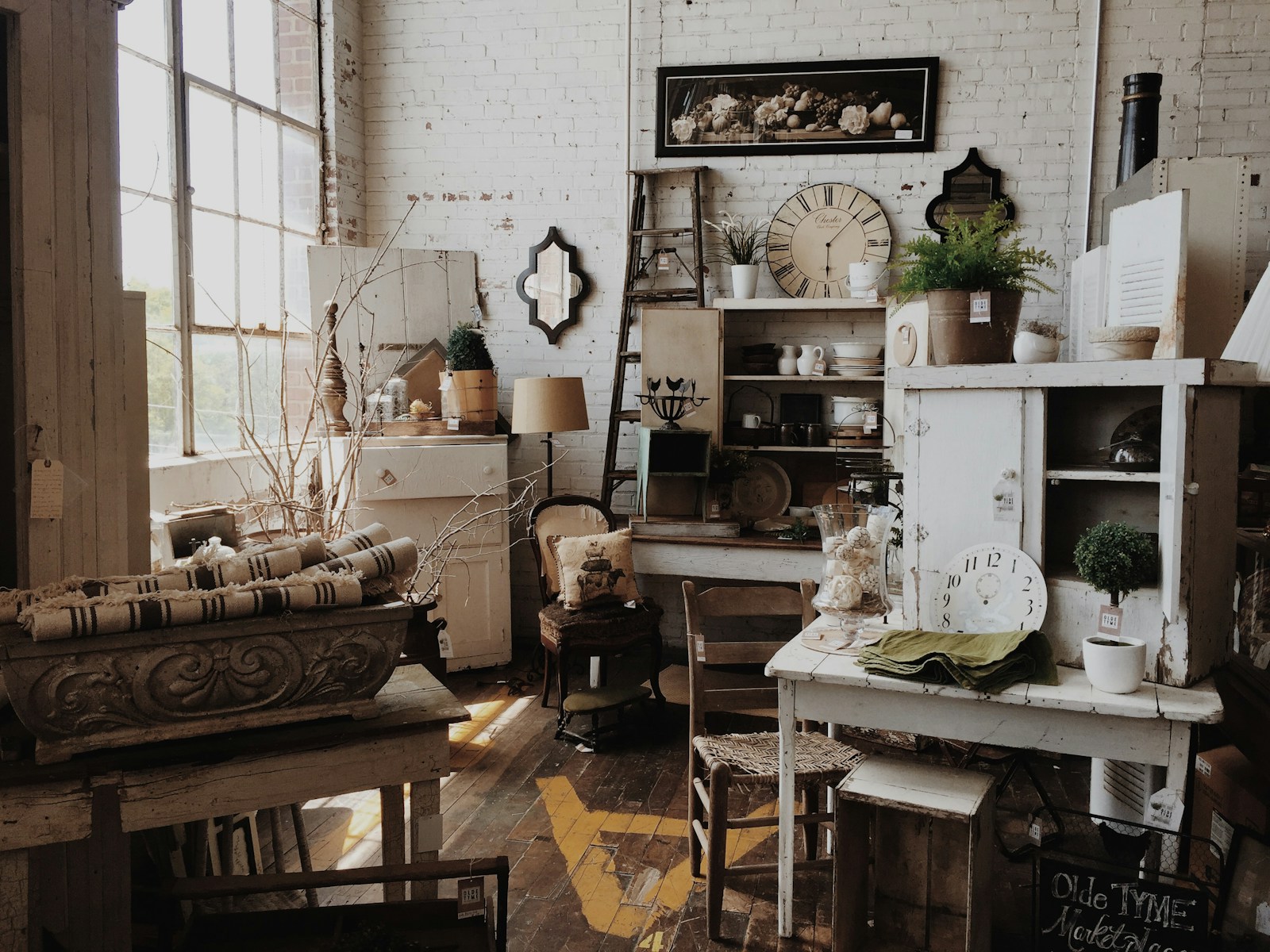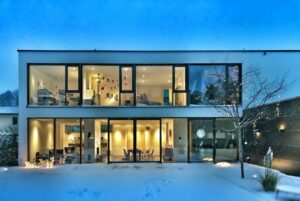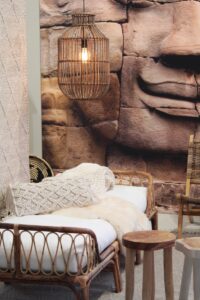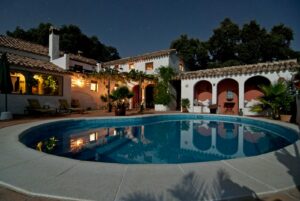TL;DR:
– Vintage homes combine historical charm with modern sustainability.
– They preserve architectural heritage and incorporate traditional design.
– Energy-efficient appliances and smart automation systems enhance vintage homes.
– Sustainability is central with solar panels, rainwater harvesting, and upcycling.
– Long-term green solutions like green roofs and energy-efficient windows future-proof vintage homes.
– Vintage homes blend tradition with innovation for a timeless green lifestyle.
Introduction
Stepping into a Vintage Home is like connecting with history’s whispers while envisioning the future. In the realm of sustainable living, these timeless abodes serve as canvases for futuristic innovations, blending tradition with cutting-edge technology. As we delve into ‘Vintage Home: 5 Futuristic Advances for Sustainable Living,‘ we embark on a journey where nostalgia meets innovation, where the charm of yesteryears harmonizes with the sustainability imperatives of tomorrow. Join me as we explore how these cherished relics are transforming into sustainable sanctuaries, embracing the essence of the past while paving the way for a greener future.
Embracing the Past: The Charm of Vintage Homes
Have you ever wandered through old neighborhoods and been enchanted by the timeless elegance of vintage homes? The preservation of historical architecture in these homes offers a glimpse into the past, showcasing the craftsmanship and beauty of bygone eras. Reviving traditional design elements and incorporating vintage decor can bring a sense of nostalgia and warmth to modern living spaces.
Preservation of Historical Architecture
– Vintage homes showcase the architectural styles of the past, preserving unique design features that tell a story of history.
– Restoring and maintaining these historical structures helps retain the character and charm of neighborhoods, contributing to the cultural heritage of communities.
Reviving Traditional Design Elements
– Incorporating traditional design elements, such as ornate moldings, clawfoot tubs, or stained glass windows, can add a touch of elegance and craftsmanship to modern homes.
– Mixing vintage style with contemporary aesthetics creates a harmonious blend that celebrates the best of both worlds in interior design.
Incorporating Vintage Decor
– Using vintage furniture, textiles, and accessories can infuse spaces with a sense of nostalgia and authenticity.
– Reimagining vintage pieces in new contexts and combining them with modern elements creates a unique and personalized aesthetic that honors the past while embracing the present.
Modern Upgrades: Technology in Vintage Homes
In a world where technology is rapidly advancing, vintage homes are not left behind. How can these historical gems benefit from modern upgrades to enhance sustainability and efficiency?
Energy-Efficient Appliances
– Installing energy-efficient appliances, such as refrigerators, washing machines, and dishwashers, can significantly reduce energy consumption and utility costs.
– Vintage homes can seamlessly integrate these modern appliances without compromising their traditional charm.
Smart Home Automation Systems
– Implementing smart home automation systems allows vintage homeowners to control lighting, heating, and security remotely, enhancing convenience and energy efficiency.
– Integrating voice-activated assistants and automated schedules can optimize energy usage in a sustainable manner.
Sustainable Building Materials
– Renovating vintage homes with sustainable building materials like reclaimed wood, bamboo flooring, and recycled glass countertops reduces environmental impact and promotes eco-conscious living.
– Pairing traditional architectural elements with sustainable materials creates a harmonious blend of heritage and modernity in vintage homes.
Sustainability at Its Core: Eco-Friendly Practices in Vintage Homes
Solar Panel Installations
Incorporating solar panels in vintage homes is a sustainable practice that not only reduces electricity bills but also minimizes the carbon footprint. By harnessing the power of the sun, homeowners can generate clean energy and contribute to a greener environment.
Rainwater Harvesting Systems
Installing rainwater harvesting systems in vintage homes allows for the collection and storage of rainwater for various purposes such as irrigation, flushing toilets, and washing clothes. This eco-friendly practice conserves water resources and reduces reliance on municipal water supply.
Upcycling and Repurposing Old Materials
Embracing the concept of upcycling and repurposing old materials is a creative and sustainable way to enhance the beauty of vintage homes. By giving new life to salvaged items like furniture, doors, and windows, homeowners can reduce waste and add unique character to their living spaces.
Future-Proofing Vintage Homes: Long-Term Green Solutions
As vintage homes transition into the modern era, it’s crucial to future-proof them with long-term green solutions. Homeowners can significantly reduce their carbon footprints while preserving the antiquity and charm of their properties. Let’s explore some practical solutions to make vintage homes environmentally friendly.
Implementing Green Roofs and Walls
Incorporating green roofs and walls is a great way to enhance the thermal insulation of vintage homes while boosting their biodiversity value. These installations reduce energy usage by maintaining cooler indoor temperatures during summer and preventing heat loss during winter. Moreover, they breathe new life into vintage homes’ aesthetics, forging a seamless transition between traditional architecture and modern sustainability ideals.
Investing in Energy-Efficient Windows
Preserving the charm of vintage homes does not mean compromising on energy efficiency. Upgrading to energy-efficient windows can significantly reduce heating and cooling costs while retaining original design elements. These windows incorporate advanced technologies like low-emissivity coatings and double glazing, dramatically reducing heat transfer and improving insulation.
Creating Sustainable Outdoor Spaces
The great outdoors of vintage homes offer splendid opportunities for introducing sustainable living practices. For example, native plant landscaping or xeriscaping can reduce water usage while attracting local wildlife. Composting green waste to improve soil quality, installing bird feeders, or creating a thriving vegetable garden are other fantastic ways to enhance the sustainability of vintage homes’ outdoor spaces.
Integrating these green solutions can help vintage homeowners tread a fine balance between honoring the past and embracing a sustainable future.
Conclusion: The Timelessness of Vintage Homes
Vintage homes stand as a testament to craftsmanship and heritage, offering a unique charm that resonates through the ages. As the allure of vintage architecture persists, blending tradition with innovation has become an integral part of sustainable living. How can we navigate the future of eco-friendly practices within the walls of vintage homes?
Blending Tradition with Innovation
Preservation of historical architecture and the revival of traditional design elements form the foundation of blending tradition with innovation. By incorporating vintage decor and modern upgrades, vintage homes can seamlessly adapt to the demands of sustainable living. This harmonious blend offers a timeless appeal while embracing contemporary eco-friendly practices.
Navigating the Future of Sustainable Living
Future-proofing vintage homes involves implementing long-term green solutions that prioritize energy efficiency and environmental sustainability. From green roofs and walls to energy-efficient windows, these sustainable features ensure that vintage homes are equipped to meet the challenges of tomorrow. By embracing eco-friendly practices, we pave the way for a greener future in vintage living.
Embracing the Green Lifestyle in Vintage Homes
As we steer towards a more sustainable future, vintage homes serve as a beacon of timeless elegance and environmentally-conscious living. Embracing the green lifestyle within vintage homes is not just a trend but a commitment to preserving our past while safeguarding our planet’s future. Let the grace of vintage homes and the ethos of sustainability guide us towards a greener tomorrow.
Next, delve into the final section to encapsulate the essence of vintage homes and sustainable living as we conclude our journey through the intersection of tradition and innovation.
Conclusion:
In a world increasingly focused on sustainability and innovation, the concept of a Vintage Home has emerged as a beacon of futuristic living. By combining timeless design with cutting-edge technology, homeowners can embrace eco-friendly practices without sacrificing style. The 5 advancements outlined here showcase the potential for a greener, more sustainable future within the cozy confines of a Vintage Home. As you explore the possibilities of sustainable living, dive deeper into the realm of Vintage Home design to unearth more inspiring ideas for a harmonious blend of past and future.










